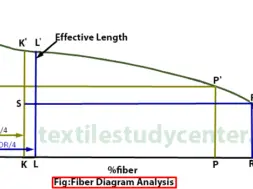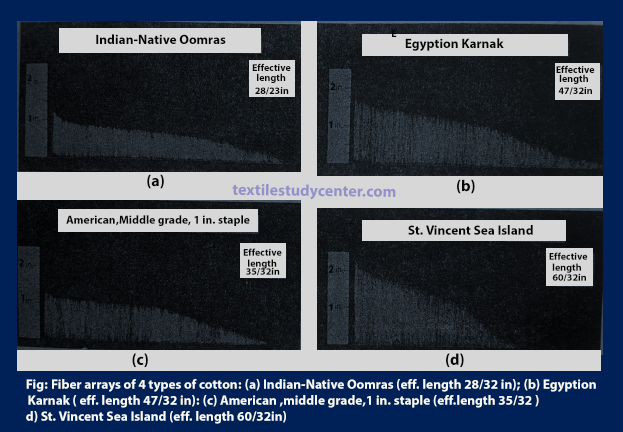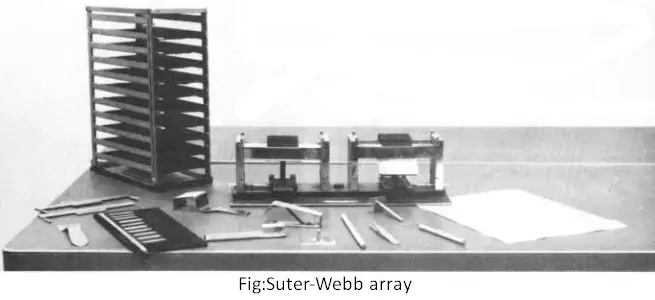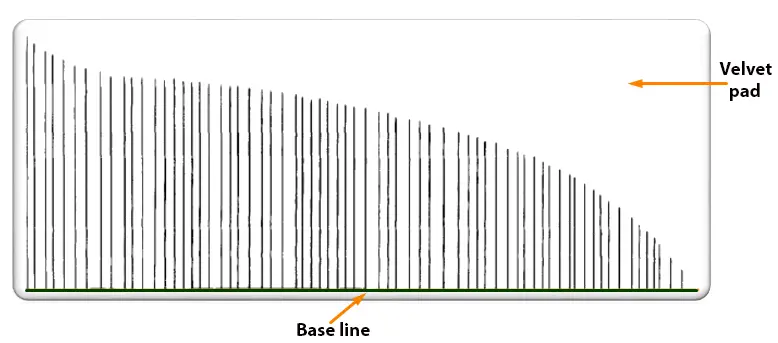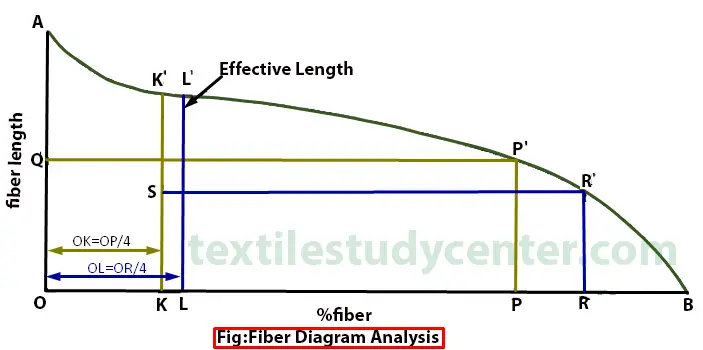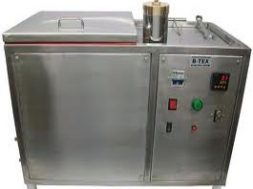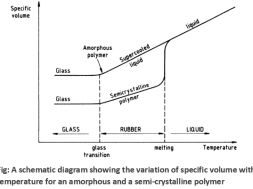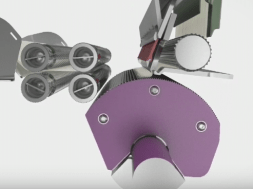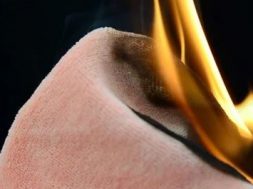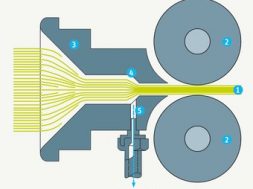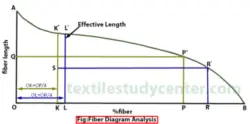
Fiber length measurement
Fiber length measurement
As single fiber measurement takes time and hand stapling requires experience, alternative methods have been developed. There are two methods for laboratory analysis used to measure fiber length.
1.Fibers sorter method/Array method-is much slower but results are more accurate.
2.Fibrograph– is the more rapid test but results are not detailed or accurate.
Fiber sorter method:
The fiber sorter is an instrument which enables the sample to be fractionalized into length groups. The Baer sorter, the Shirley comb sorter, and the Suter-Webb sorter are the most popular method of the fiber sorter. Basically, the operation involves four main steps:
- Preparation of a fringe or tuft with all fibers aligned at one end.
- The separation or withdrawal of fibers in order of decreasing length.
- The preparation of a sorter diagram by laying the fibers on a black velvet pad in decreasing order of length, the fibers parallel and their lower ends aligned along a horizontal base line as shown in Figure.
- The analysis of the sorter diagram.
Suter-Webb array (SW):
This method consists of a bed of upright and parallel combs which control the fibers and arranged it in the form of an array of uniform density in the descending order of length. In this way enable the sample (fibers) to be fractionated into length groups for determining cumulative fiber length distribution phentermine online by weight in parameters upper quartile length (UQL), mean length (ML) and % short fibers (SFC) as illustrated in Fig. and dispersion percentage which is expressed as (CV%). The disadvantages of this device are time-consuming (2 hrs. per sample) and calls for considerable operator skill in sampling and preparing the diagram (Fig.).
The Shirley comb sorter Method
Principle
A sample of fibers is arranged in the form of an array in the descending order of length, and from a tracing of this array some fiber length parameters are calculated.
Apparatus
a) Two set of combs
b) Fiber grip
c) Teasing needle
d) Aluminum depressor
e) Velvet pad, and
f) Rectangular perspex scale (160 x 80 mm) marked in 5 mm squares.
Construction:
1) This instrument consists of a two set of combs (top & bottom) arranged at fixed intervals to hold the fibers and keep them straight.
2) Here 8 top combs and 9 bottom combs are used, each comb are spaced 6 mm (¼ inch) apart except the first two bottom comb which is 3/16 inch apart.
3) The distance from a row of bottom needles to a row of top needles is 3mm (1/8 inch).
4) An aluminum depressor, grip, teasing needles, velvet pad etc. are also used.
Procedure:
- A bundle of fibers prepared by one of the zoning methods is straightened by hand and pressed into the lower set of combs is impaled in the combs with the ends of fibers protruding, as illustrated in the left-hand side of Fig.A
- The end of the bundle is straightened by gripping the ends of the outermost fibers with a wide clamp and withdrawing them a few at a time.
- The whole sample is then transferred in this way, a few fibers at a time, to position B at the other end of the combs and placed there so that the fiber ends coincide with the first comb.
- The sample is pressed down into the bottom combs and the top combs are then lowered onto the sample.
- The rear combs are moved out of the way one at a time until the ends of the longest fibers are exposed.
- The exposed fibers are then removed by the grip and laid on a black velvet pad. The next comb is then removed, so exposing the fibres which constitute the next length group and these are removed and laid next to the first set of fibres, making sure that all the fibres are laid with a common base line.
- Then trace the outline of the fiber array prepared on a sheet of translucent paper (see Fig. C)
(7483)
